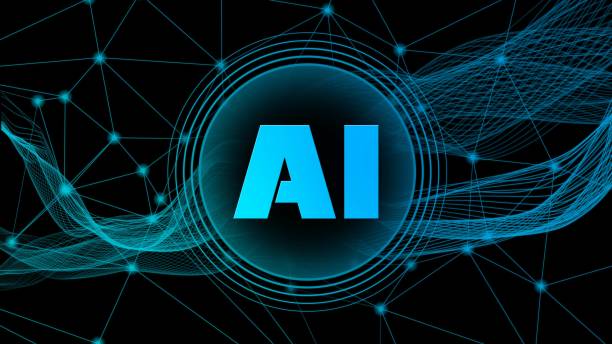Introduction to On-Page SEO and Its Importance

In today’s highly competitive world of #Digital_Marketing, a successful online presence is almost impossible without attention to #SEO.
One of the main pillars of this success is On-Page SEO, or on-page optimization.
On-Page SEO refers to the set of actions you perform within your website to improve its ranking in search engine results.
These actions include content optimization, site structure, HTML elements, and user experience.
The importance of this part of SEO lies in helping search engines better understand your content and recognize its relevance to user searches.
Without strong On-Page SEO, even the best content may go unnoticed.
This is an educational and fundamental component that every webmaster or digital marketer must master.
A deep understanding of how search engines work and the factors they consider for ranking pages is key to success in this field.
Factors such as keywords, content quality, page load speed, and website responsiveness all fall under the umbrella of On-Page SEO.
In this article, we will explain explanatorily and step-by-step all vital aspects of On-Page SEO to help you achieve higher rankings.
The ultimate goal of On-Page SEO is to provide the best user experience while sending clear signals to search engines.
Tired of missing out on business opportunities due to not having a professional corporate website? Worry no more! With Rasaweb’s corporate website design services:
✅ Your brand’s credibility and professionalism will increase.
✅ You will attract more customers and sales leads.
⚡ Get a free consultation right now to start!
Keyword Research for On-Page SEO: A Crucial Step
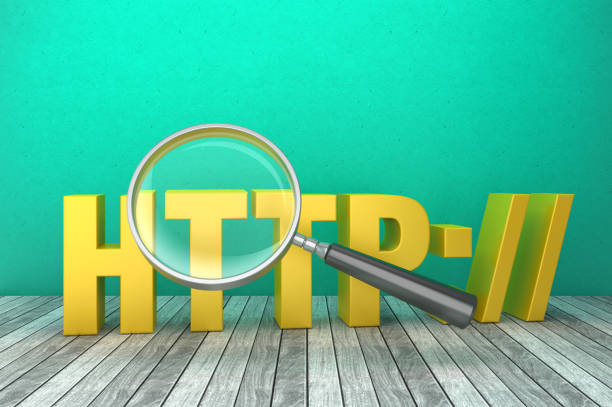
One of the first and most important steps in successful On-Page SEO is keyword research.
This specialized process involves identifying the words and phrases that your target audience uses to find products, services, or information related to your business in search engines.
Without appropriate keywords, all your subsequent efforts in On-Page SEO may be ineffective.
The goal is not just to find keywords with high search volume, but to find words that align with users’ search intent.
For example, if a user is looking for “buy sports shoes,” you should ensure that your page’s content addresses this goal, not just “history of sports shoes.”
Using tools like Google Keyword Planner, Ahrefs, Semrush can be very helpful at this stage.
Also pay attention to Long-tail Keywords; these are more specific phrases, typically with lower search volume but higher conversion rates.
For instance, instead of “shoes,” you might use “best men’s walking shoes size 42.”
These keywords help you attract visitors who are precisely looking for what you offer, and this directly impacts your On-Page SEO success.
Comprehensive keyword research provides you with a roadmap for content creation and page optimization, ensuring that your efforts are aimed at attracting the right audience.
Content Optimization for On-Page SEO and User Engagement

After keyword research, it’s time for content optimization, which is one of the most important pillars of On-Page SEO.
Your content must be high quality, relevant, and valuable to the user.
Search engines are now very smart and can identify low-quality or duplicate content.
Natural and logical use of keywords throughout the text, especially in the introductory paragraphs and headings, is highly important.
Avoiding keyword stuffing (excessive repetition of keywords) is crucial, as it can harm your ranking instead of improving it.
To enhance On-Page SEO, you should organize content structure using Heading tags (H1, H2, H3, etc.).
H1 should contain the main keyword of the page, and other Heading tags should be used for subheadings and content organization.
This helps with content readability for users and also helps search engines better understand the page structure.
Additionally, text readability is very important; using short sentences, small paragraphs, lists, and images can improve user experience and increase user time on page, which is itself a positive signal for SEO.
This part of On-Page SEO is a continuous educational activity that requires creativity and a deep understanding of audience needs.
Using guiding and comprehensive content helps you become an authoritative source in your field.
Table 1: Content Optimization Checklist for On-Page SEO
| Optimization Element | Description | Importance for On-Page SEO |
|---|---|---|
| Main Keywords | Natural and strategic use in title, introduction, and body text. | Basis for search engine’s understanding of page topic. |
| Heading Structure (H1-H6) | Hierarchical use for content organization and readability. | Helps search engines scan content and highlight important sections. |
| Content Quality and Depth | Providing comprehensive, accurate, and useful information for the user. | Increases credibility, reduces bounce rate, and increases dwell time. |
| Readability | Short sentences, small paragraphs, use of lists. | Improves user experience (UX) which is a strong ranking signal. |
| Internal and External Links | Linking to relevant internal pages and authoritative external sources. | Improves site structure and increases page authority. |
The Role of HTML Tags in On-Page SEO
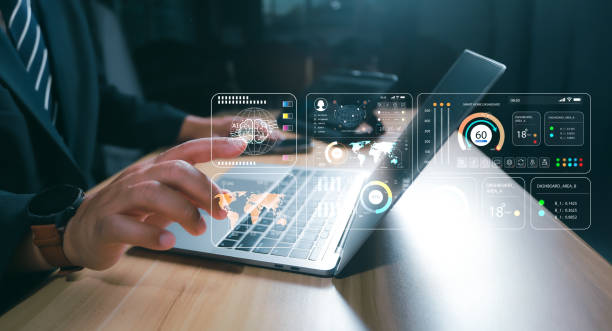
HTML tags are fundamental elements that form the structure of your website and play a vital role in On-Page SEO.
Proper optimization of these tags helps search engines better understand your page’s content and display it correctly in search results.
The most important tags include the Title Tag, Meta Description Tag, Heading Tags (H1-H6), and Alt Tag for images.
The Title Tag is the most important HTML tag from an SEO perspective and should accurately reflect the page’s content and include the main keyword.
Its optimal length is usually between 50 and 60 characters.
The Meta Description Tag, although not directly affecting ranking, plays an important role in attracting user clicks from the search engine results page (SERP), so it should be engaging and include relevant keywords.
Heading Tags, as mentioned earlier, help organize content and improve readability.
H1 is usually the main title of the page and should be used only once, while H2 to H6 are used for subheadings and further text structuring.
The Alt Tag for images also provides textual information about the image content to search engines and is essential for website accessibility.
Optimizing these tags is a specialized and necessary activity for any On-Page SEO campaign.
This helps search engines correctly index your content and present it to the right users.
In fact, these tags are the bridge between your content and complex search engine algorithms, and adhering to them is a key guide to success in On-Page SEO.
Did you know that customers’ first impression of your company is your website? Double your business’s credibility with a powerful corporate site from Rasaweb!
✅ Custom and eye-catching design tailored to your brand
✅ Improved user experience and increased customer attraction
⚡ Get a free consultation!
Optimizing Images and Videos for On-Page SEO

In addition to text, visual content such as images and videos also play an important role in On-Page SEO and improving user experience.
Optimizing these elements can help increase traffic from image search and video search, as well as improve page load speed.
For images, using a descriptive Alt Tag that includes relevant keywords is very important.
This text is displayed if the image fails to load and helps search engines understand the image content.
Also, compressing images to reduce file size without significant loss of quality is crucial for improving page load speed.
Appropriate formats such as WebP can also help with this.
For videos, using a Video Sitemap and adding textual descriptions (Transcripts) for audio content can help search engines index them better.
Also, make sure your video player is optimized and does not slow down the site.
Optimizing visual content is a specialized aspect of On-Page SEO that is often overlooked but can significantly impact your site’s overall performance.
This section guides you on how to prepare your images and videos for search in the best way.
Increasing user engagement with visual content also sends positive signals to search engines, which ultimately helps improve your On-Page SEO ranking.
URL Structure and Internal Linking for On-Page SEO
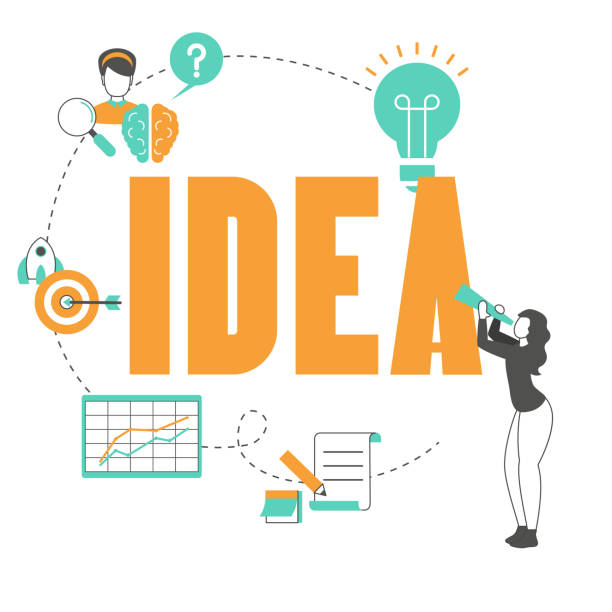
URL structure and internal linking strategy are two other important factors in optimizing On-Page SEO.
A clean and readable URL is not only more understandable for users but also helps search engines understand the page content.
URLs should be short, descriptive, and include the page’s main keywords.
Avoiding irrelevant characters, meaningless numbers, and long parameters is essential.
For example, instead of “yoursite.com/page?id=123&cat=456”, use “yoursite.com/blog/on-page-seo-optimization”.
Internal linking is the process of creating links between different pages of your own website.
This helps search engines understand your site’s structure, discover new pages, and determine the relative importance of different pages.
Internal linking also helps users easily navigate your site and discover more relevant content, leading to increased dwell time and reduced bounce rate.
Use descriptive and relevant Anchor Texts; instead of “click here,” use “complete guide to On-Page SEO.”
This aspect of On-Page SEO is a guiding activity that helps improve PageRank distribution within your site and transfers page authority between them.
A strong internal linking strategy shows search engines which of your pages are more important, which significantly helps improve the overall On-Page SEO ranking of your site.
Page Load Speed and User Experience (UX) in On-Page SEO

Page load speed and user experience (UX) are no longer just secondary factors, but fundamental pillars of On-Page SEO.
Google has repeatedly emphasized that site speed and Core Web Vitals are important ranking factors.
A slow site not only frustrates users and increases bounce rate, but search engines also recommend it less to users.
This is important (news) for any website.
Factors such as LCP (Largest Contentful Paint), FID (First Input Delay), and CLS (Cumulative Layout Shift) are directly related to user experience.
To improve speed, you can compress images, optimize CSS and JavaScript codes, use browser caching, and choose a reliable hosting provider.
Excellent user experience means that your site is easy to navigate, its content is easily accessible and readable, and it displays well on different devices (mobile, tablet, desktop).
Mobile-friendliness of the site is a fundamental ranking factor, as a large portion of searches are conducted via mobile devices.
Analyzing data related to user behavior on your site (such as dwell time, bounce rate, and navigation paths) can provide valuable insights for UX improvement.
This is an analytical approach that helps you identify and solve problems.
Investing in improving speed and UX is a direct investment in On-Page SEO and the long-term success of your site.
Table 2: Speed and UX Analysis Tools for On-Page SEO
| Tool | Usage | Key Points for On-Page SEO |
|---|---|---|
| Google PageSpeed Insights | Analyzes site speed for mobile and desktop, provides improvement recommendations. | Displays Core Web Vitals and performance optimization opportunities. |
| Google Search Console | Monitors site performance in search, reports on Core Web Vitals, accessibility issues. | Identifies pages with poor performance and mobile-friendliness issues. |
| GTmetrix | Comprehensive site speed analysis, performance scoring, optimization suggestions. | Waterfall analysis to identify slow elements. |
| Lighthouse (in Chrome DevTools) | Built-in browser audit tool for performance, accessibility, best practices, and SEO. | Comprehensive and immediate assessment of page’s On-Page SEO status. |
Engaging Content and Updates in On-Page SEO
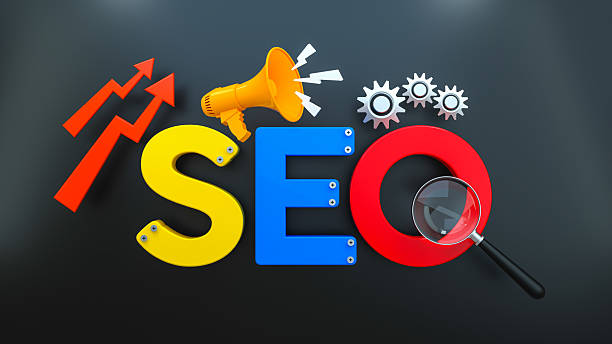
Creating engaging content and regularly updating it are two key strategies in On-Page SEO that are often overlooked.
Engaging content refers to content that makes users think and interact, answers their questions, and even raises new questions in their minds.
This type of content usually includes comprehensive guides, case studies, expert opinions, and in-depth analyses that go beyond surface-level information.
The goal is to make you an authoritative source and trustworthy.
Answering common user questions (FAQ) and anticipating their informational needs can help you rank well in search results for question queries.
Furthermore, continuous content updates are also very important for On-Page SEO.
Search engines prefer fresh and updated content, especially for topics whose information constantly changes.
Updating old content with new information, fresh statistics, new links, and necessary corrections can give it new life and improve its ranking.
This is an analytical approach performed by reviewing content performance over time.
Publishing entertaining and engaging content alongside specialized content can help increase engagement rates and reduce bounce rates, all of which are positive signals for search engines.
These actions ensure that your On-Page SEO is always dynamic and growing, covering the changing needs of users and search algorithms.
Are you dissatisfied with the low conversion rate of visitors to customers on your e-commerce site?
Solve this problem permanently with professional e-commerce website design by Rasaweb!
✅ Increase visitor-to-customer conversion rate
✅ Create an excellent user experience and build customer trust
⚡ Get a free consultation
Advanced On-Page SEO Tools and Techniques

To elevate On-Page SEO to higher levels, it requires the use of more advanced tools and techniques.
One such technique is implementing structured data (Schema Markup).
Structured data helps search engines better understand your page’s content and display it in richer ways in search results (Rich Snippets).
This can include star ratings for products, event information, cooking recipes, and more.
Proper implementation of Schema Markup can significantly increase your click-through rate (CTR) and is considered an important competitive advantage in On-Page SEO.
Analytical tools such as Google Search Console and Google Analytics are essential for monitoring On-Page SEO performance.
Search Console allows you to check page indexing status, technical issues, Core Web Vitals reports, and the keywords with which users found your site.
This information helps you identify new keywords and optimize existing content to improve rankings.
Using paid tools like Ahrefs and Semrush can also provide more specialized insights into competitor analysis, keyword opportunities, and backlinks.
These tools provide you with comprehensive and powerful guidance for continuous On-Page SEO optimization and assist you in data-driven decisions.
Monitoring and Analyzing On-Page SEO Performance

After implementing On-Page SEO strategies, the final and crucial step is continuous monitoring and analysis of performance.
Google Analytics and Google Search Console are two free and powerful tools that provide valuable insights for analyzing your On-Page SEO performance.
In Google Search Console, you can review reports such as the Performance Report to see which keywords you’ve ranked for, your pages’ click-through rate (CTR), and how many impressions you’ve received.
This information helps you identify new keywords and optimize existing content to improve rankings.
In Google Analytics, you can analyze user behavior after they enter your site.
Metrics such as Dwell Time, Bounce Rate, pages viewed per session, and user navigation paths are all important signals about the quality of user experience and content effectiveness.
A high bounce rate may indicate irrelevant content or a poor user experience that requires On-Page SEO optimization.
You can also conduct A/B tests for titles, meta descriptions, or even parts of content to see which version performs best.
This analytical and data-driven approach guides you to continuously adjust and improve your On-Page SEO strategies.
Regular monitoring and implementing changes based on data guarantee long-term success in On-Page SEO and maintaining your position in search results.
Frequently Asked Questions
| Number | Question | Answer |
|---|---|---|
| 1 | What is On-Page SEO? | On-Page SEO refers to a set of actions performed within a website to optimize its pages for better search engine rankings. |
| 2 | What is the most important factor in On-Page SEO? | High-quality, relevant, and comprehensive content that meets user needs is the most important factor in On-Page SEO. |
| 3 | What role does the Title Tag play in On-Page SEO? | The Title Tag is one of the most important factors that tells search engines and users what the page content is about. It should include the main keyword and be engaging. |
| 4 | How important is the Meta Description Tag? | Although it doesn’t directly affect ranking, it significantly impacts the click-through rate (CTR) in search results and encourages users to visit the page. |
| 5 | How is image optimization done in On-Page SEO? | By using an appropriate alt tag, compressing image size to increase load speed, and meaningful naming of the image file. |
| 6 | What is the importance of using headings (H1, H2, H3) in On-Page SEO? | Headings help structure content, increase readability, and assist search engines in understanding the hierarchy and subtopics of the content. |
| 7 | What is Internal Linking and what are its benefits? | Internal linking means creating links between different pages of a website. This helps distribute authority, improve user navigation, and assist search engine crawling. |
| 8 | Where should the Focus Keyword be placed on the page? | The main keyword should be placed in the title tag, meta description, H1, first paragraph, naturally throughout the text, and if possible, in the URL. |
| 9 | What effect does duplicate content have on On-Page SEO? | Duplicate content can harm a site’s ranking and confuse search engines about which version is original, potentially leading to it being flagged as spam. |
| 10 | How important is page load speed in On-Page SEO? | Page load speed is an important ranking factor and directly affects user experience. Slow pages lead to an increased bounce rate. |
And other advertising services of Rasaweb Advertising Agency
Smart Social Media: Designed for businesses looking to increase click-through rates through key page optimization.
Smart Marketplace: An effective tool to improve SEO ranking with the help of Google Ads management.
Smart Content Strategy: Designed for businesses looking to manage campaigns through attractive user interface design.
Smart Google Ads: Designed for businesses looking to analyze customer behavior through marketing automation.
Smart Marketing Automation: Revolutionize SEO ranking with the help of real data.
And over a hundred other services in the field of internet advertising, advertising consulting, and organizational solutions
Internet Advertising | Advertising Strategy | Advertorials
Sources
Advanced On-Page SEO: A Complete Guide On-Page SEO Checklist Difference between Technical and On-Page SEO Importance of On-Page SEO for Businesses
? To achieve peak success in the digital world, Rasaweb Afarin is your strategic partner for business, providing comprehensive digital marketing services including secure website design and professional optimization. Transform your business future with us.
📍 Tehran, Mirdamad Street, next to Central Bank, Kazeroun Jonoubi Alley, Ramin Alley No. 6


